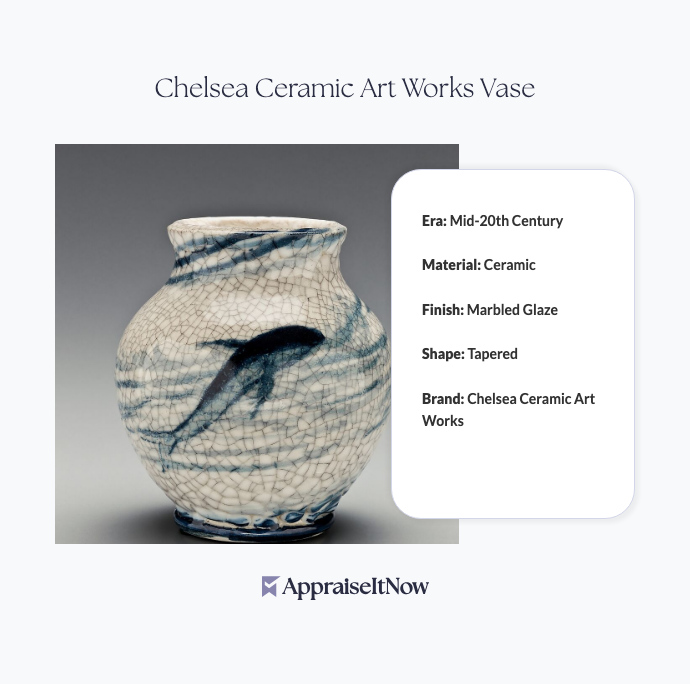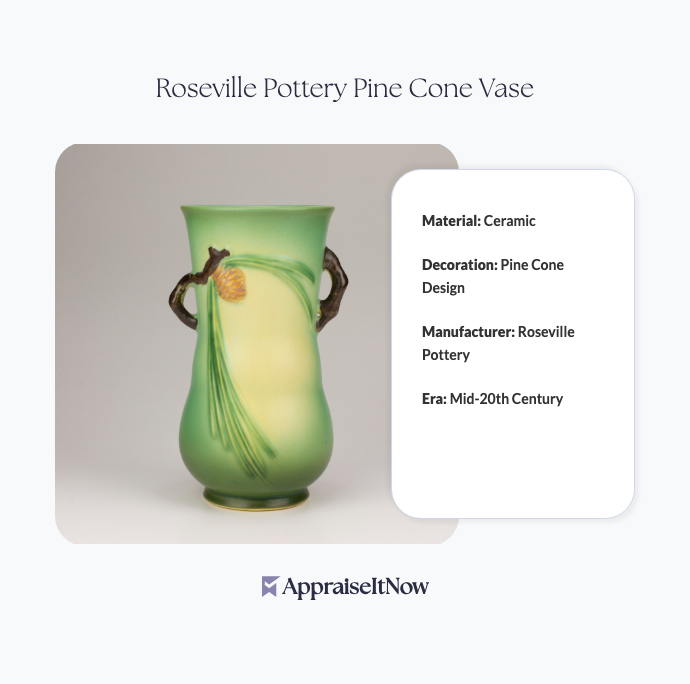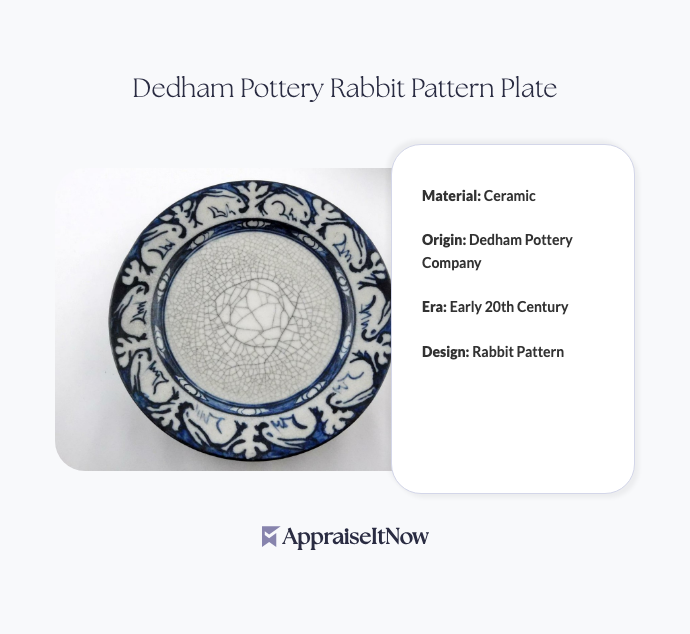<h1>How to Get Your Pilkington Royal Lancastrian Vase Appraised</h1>
<p>If you're considering selling a Pilkington Royal Lancastrian Vase, evaluating one for insurance purposes, or simply curious about what your family heirloom is worth, understanding the appraisal process is essential. These exceptional ceramic pieces, valued between <strong>$1,500 and $2,500</strong>, represent important examples of English pottery craftsmanship from the early 20th century. A professional appraisal provides the documentation and expertise you need to make informed decisions about your investment.</p>
<h2>Understanding Your Pilkington Royal Lancastrian Vase Value</h2>
<p>The Pilkington Pottery in Lancashire, England created these highly sought-after vases using the distinctive <strong>Royal Lancastrian glaze technique</strong>, which became the hallmark of the company's reputation during the early 1900s. Your vase's value stems from multiple factors working together—the exceptional craftsmanship, limited production runs, and the unmistakable combination of vibrant blues, greens, and golds that define this ceramic style.</p>
<p>First introduced in 1910, the Pilkington Royal Lancastrian Vase represents a pivotal moment in English ceramics when manufacturers were experimenting with bold glazing techniques and sophisticated silhouettes. The rarity of surviving examples, combined with the artistic significance of the Royal Lancastrian line, makes these pieces genuinely valuable to collectors and museums worldwide. Understanding these fundamentals helps you appreciate why professional evaluation matters so much.</p>
<div class="callout tip"><p><strong>Valuation Insight</strong></p>
<p>Pilkington Royal Lancastrian Vases with exceptional color saturation and pristine glaze finish typically command premiums at the higher end of the $1,500-$2,500 range.</p></div>
<h2>What Makes a Pilkington Royal Lancastrian Vase Valuable?</h2>
<p>When you ask "how can I tell if my vase is valuable?", the answer involves examining several interconnected elements. Professional appraisers look beyond surface appeal to assess authenticity, condition, and historical significance. Your vase's value depends on its elegant silhouette combined with intricate design elements that showcase the technical mastery of Pilkington's glaze artisans.</p>
<p>The Royal Lancastrian glaze technique itself represents significant innovation. This specialized process created depth and richness that couldn't be achieved through standard glazing methods, which is why <a href="/blog/appraising-fine-porcelain-and-ceramics-valuing-delicate-artistry">fine porcelain and ceramics appraisals</a> require experts trained specifically in recognizing these distinctions. The vibrant color palette—particularly the deep blues and rich golds—directly signals authenticity and desirability to experienced collectors.</p>
<p>Beyond aesthetics, production context matters tremendously. Pilkington's limited production runs mean fewer examples survived the past century, automatically increasing scarcity value. When collectors ask which vase is worth money, Pilkington Royal Lancastrian examples consistently appear near the top, particularly when paired with original documentation or provenance history.</p>
<h2>Recognizing Authenticity and Condition</h2>
<p>Before pursuing an appraisal, understanding how to identify genuine Pilkington pieces protects you from overvaluation based on misconceptions. Unlike some questions about "how much is a Qing dynasty vase worth?" or concerns about "which Chinese vases are valuable?", English art pottery operates within distinct market parameters with different authentication markers.</p>
<p>Your Pilkington vase should bear specific identifying features. Look for the <strong>Pilkington Pottery mark</strong>, typically found on the base, which may include impressed or painted signatures. The glaze surface should exhibit the characteristic luster and color saturation associated with the Royal Lancastrian technique. Original examples possess no crazing—fine cracks in the glaze surface that signal age or improper firing.</p>
<p>Condition directly affects your vase's appraisal value. Minor surface wear is normal and acceptable, but chips, cracks, or restoration work significantly diminishes worth. When evaluating whether your vase is an antique, the construction method, glaze composition, and marking style all confirm dating. Professional appraisers use specialized knowledge to distinguish authentic early-production pieces from later reproductions or similar ceramics from competing manufacturers.</p>
<div class="callout note"><p><strong>Authentication Consideration</strong></p>
<p>Unmarked Pilkington pieces or vases lacking clear provenance typically require expert analysis to confirm attribution, which is why professional appraisal becomes particularly valuable.</p></div>
<h2>The Role of Provenance and Documentation</h2>
<p>Just as professionals conducting <a href="/blog/exploring-the-role-of-provenance-in-art-appraisals-assessing-historical-significance">antique artwork appraisals</a> emphasize provenance significance, your Pilkington vase's documented ownership history substantially impacts its appraised value. If you can trace your vase through previous collections, gallery sales, or museum exhibitions, this documentation supports higher valuations and adds compelling narrative appeal to potential buyers.</p>
<p>Compile whatever information you have before meeting with an appraiser. Previous appraisals, auction catalogs, family records, or photographs showing the vase's history all strengthen the professional evaluation. Even without complete provenance, quality appraisers can establish authentication and provide contextual value analysis based on comparative sales data and market research.</p>
<h2>Comparing Your Pilkington to Other Valuable Ceramics</h2>
<p>Understanding where your Pilkington Royal Lancastrian Vase sits within the broader ceramics market provides helpful perspective. While you might wonder "what is the most sought after vintage glass?" or question valuations for Asian ceramics, English art pottery like Pilkington operates with distinct collector preferences and market dynamics.</p>
<p>Fine and art glass from this era certainly attracts significant collector interest, but the Pilkington Royal Lancastrian line occupies a specialized niche within <a href="/blog/appraising-fine-porcelain-and-ceramics-valuing-delicate-artistry">antique ceramics</a> where rarity, technical achievement, and design innovation combine to drive values. Your vase represents the intersection of functional artistry and manufacturing excellence that defines the Arts and Crafts movement's influence on early 20th-century English pottery.</p>
<h2>Why Professional Appraisal Matters for Your Vase</h2>
<p>Obtaining a certified appraisal from a qualified specialist provides multiple tangible benefits beyond simply knowing your vase's estimated value. Insurance companies require professional documentation for coverage at replacement value. If you're considering estate planning, divorce settlement, or charitable donation, formal appraisals provide legally defensible valuations accepted by financial institutions and courts.</p>
<p>A professional appraiser brings specialized knowledge about Pilkington production timelines, glaze variations, and market trends that affect pricing. They conduct thorough condition assessments, document findings with high-resolution photography, and provide detailed written reports explaining valuation methodology. This documentation protects you whether you're buying at auction, selling privately, or ensuring adequate insurance protection.</p>
<p>When seeking appraisal services, look for specialists with demonstrated experience in <a href="/blog/the-value-of-professional-antiques-appraisals">antiques and memorabilia</a>. Qualified appraisers hold credentials from recognized organizations like the American Society of Appraisers (ASA) or International Society of Appraisers (ISA), ensuring adherence to professional standards and ethical practices. AppraiseItNow connects you with certified experts across the U.S. who specialize in ceramics and decorative arts, providing USPAP-compliant valuations suitable for all professional purposes.</p>
<div class="callout tip"><p><strong>Professional Advantage</strong></p>
<p>Certified appraisers maintain current market databases and comparative sales records, allowing them to position your Pilkington vase within the current collector landscape with precision and authority.</p></div>
<h2>Documentation You'll Need for Appraisal</h2>
<p>Prepare these materials before your appraisal appointment to streamline the process and provide maximum context. Clear photographs from multiple angles, including the base and any maker's marks, help the appraiser assess condition and authenticity. Measurements (height, diameter, weight) provide documentation reference points.</p>
<p>If you have previous appraisals, purchase receipts, or auction catalogs mentioning your vase, gather these documents. Family records describing how you acquired the piece, when it entered your collection, or any historical information enhance the appraisal context. Even informal documentation demonstrates engagement with the piece and supports valuation narrative.</p>
<h2>Making Your Appraisal Decision</h2>
<p>Getting your Pilkington Royal Lancastrian Vase appraised represents a straightforward investment in accurate information. Whether you're preparing for life events, considering sale, or simply wanting to understand your collection's worth, professional evaluation provides confidence and documentation that stands up to professional scrutiny.</p>
<p>The process is relatively quick—most ceramic appraisals complete within a single appointment combining physical examination, research, and detailed reporting. You'll receive a comprehensive written report explaining the vase's authentication, condition assessment, market analysis, and final valuation estimate. This documentation becomes your reference for insurance, sale discussions, or collection management purposes.</p>
<div class="callout note"><p><strong>Key Takeaway</strong></p>
<p>A certified appraisal of your Pilkington Royal Lancastrian Vase provides professional documentation that confirms authenticity, establishes fair market value between $1,500 and $2,500, and gives you confidence whether you're buying, selling, insuring, or stewarding this exceptional example of English ceramic artistry.</p></div>







.avif)







